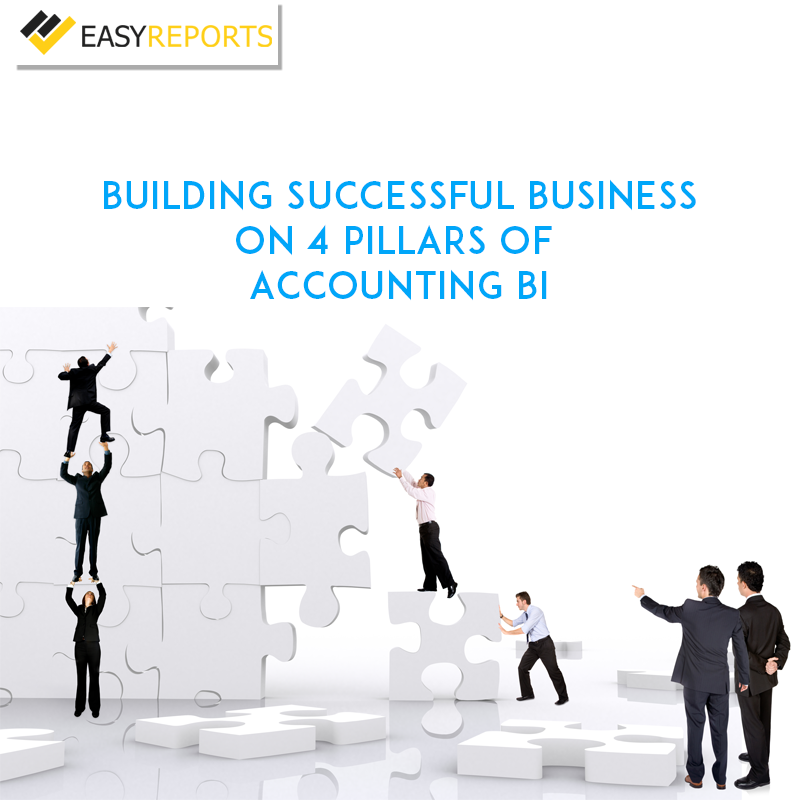August 31, 2017
Business intelligence more often than not alludes to complex algorithms, designing and developing of predictive engines in the backend where a wide range of complex business information is displayed as reports and visually appealing graphs interpreting the organization’s health. The displayed information may detail out a particular dimension and it is possible to drill it down to the lowest level to derive actionable.
Enterprises, where there is a huge flow of data, can profit fundamentally from business insights provided by BI tools like EasyReports. However, only a few of them actually utilize these advantages. Business intelligence enables an organization to recognize its most beneficial clients, pitfalls inside the enterprise, have a tight control over the bottom line, do a due diligence check on the pending cash flow from different sources, etc. A successful BI implementation is tedious and requires not only extensive man hour but also calls for a cultural change in the organization. But when actualized and utilized effectively, its advantages can be noteworthy.
The four pillars of a Business Intelligence tool like EasyReports, which determines the success of a business, are –
Data Quality
Data is the heart and the soul of a Business Intelligence (BI) tool. Any BI works on the data inputs and generates report after proper slicing and dicing of data. Therefore, there is no need to say that quality of data matters the most when it comes to the output of a business intelligence tool. A BI solution like EasyReports automatically fetches data from Tally and provides you with reports as per your requirement. If you input wrong data in your Tally, the BI solution will also fetch the same and eventually it will end up generating an ‘Improper’ report based on the poor incorrect data input and hence the analysis would be wrong. Therefore, it is always advisable to maintain Data Quality governed by proper Data Governance policies if you want to make the most out of your BI tool.
Visually rich presentation of the data
A Business Intelligence solution like EasyReports transforms data into information. It becomes more comprehensible when displayed in the form of visually rich graphs in dashlets within dashboard. The dashboard has drill down facilities which helps the business users get into the root of the problem figuratively and take necessary strategic actions. In fact, in tools like EasyReports you can view a particular report from different dimensions using the flexibility provided by data cubes. Analyzing tables where there are only figures is not only tedious but mentally tiring also. Clients have turned out to be more modern and requesting, and wish to have the capacity to picture information with the analysis that can be easily interpreted. Example – the visually appealing alerts and exceptions raised by EasyReports help the management take corrective actions fast.
Visual representations in the form of outlines, charts, scatter plots, warm maps, and geographic maps, etc. have made BI data interpretation more attractive and action oriented for the business users.
Access of right data to right people
The business intelligence group is comprised of
(i) Business leaders who drive activity;
(ii) Control clients, who are the interface between the honchos and IT;
(iii) Lastly IT designers & developers.
When setting up a business insight stage, one needs to define and set up accordingly specific data access for each role. The transformation of business users into data analysts contributes largely to the growth of the organization. But for this individuals need to play with the BI application. In that case, the Data Governance framework if rightly implemented would drive the internal logic within the software as which data to display to which role or individual within that role. In this way, data security and eventually the company policies would be maintained.
BI alignment to your Business
Each business has its own vision and mission. A business intelligence solution should be developed keeping those ultimate objectives in mind and the application should therefore, help the management feed information required to meet the short and long term goals of the organization eventually. This alignment to your business is treated as one of the most important pillars of a BI, because, if the BI displays data or speaks information which is not in sync to the objectives set then the entire money and effort spent behind this implementation will be futile. The ultimate objectives of your business can be – target revenue to be achieved in the span defined, rate of estimated growth, profitability target, etc. The dashboard of your BI solution should be personalized to provide you with the required information in the form of graphs, charts and visual representation that would facilitate you to know the overall health of your organization in a few clicks so that you can take the right decision in least time.
The top management should consider the above pillars while transforming into a data driven agile organization.
